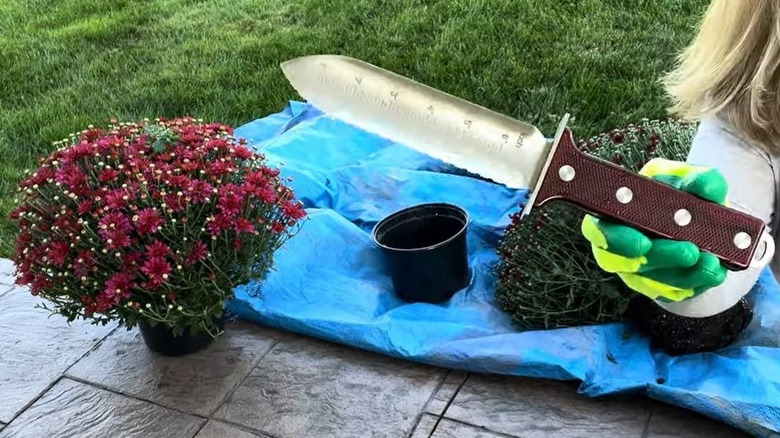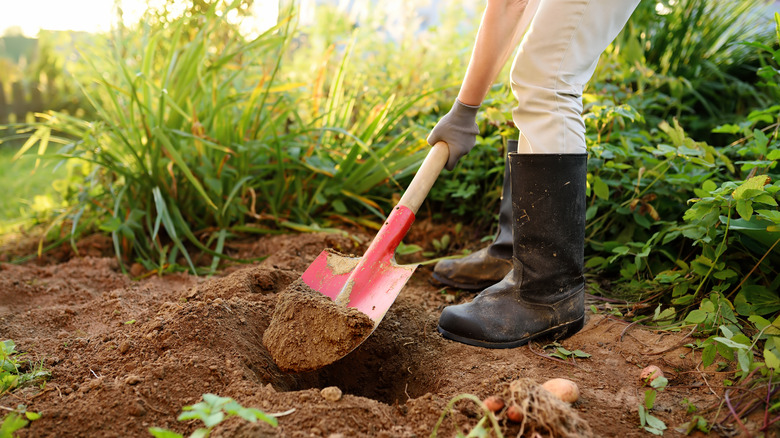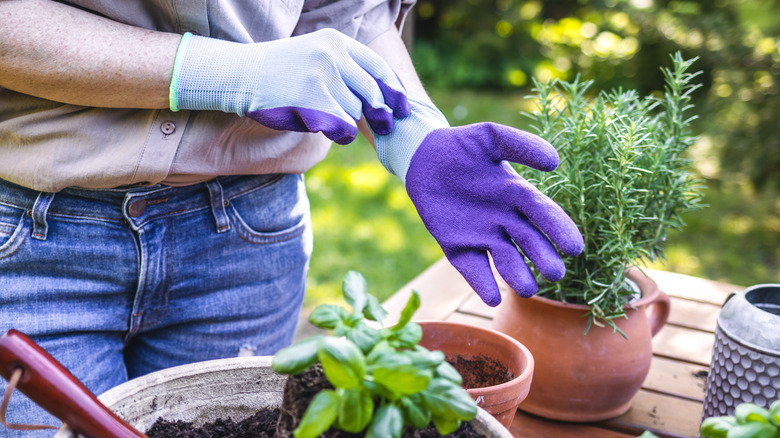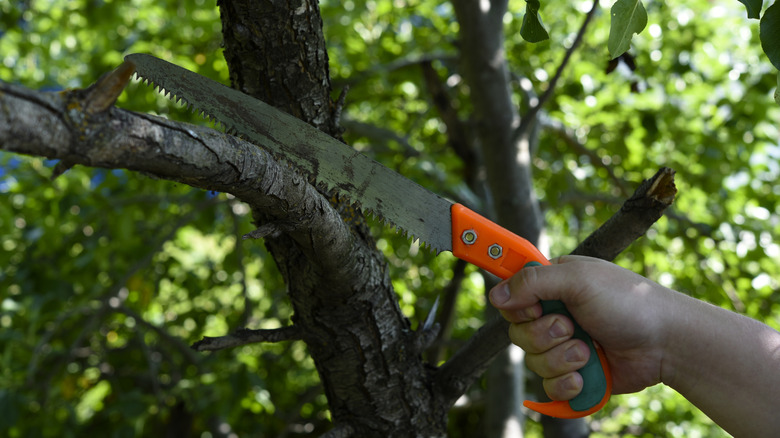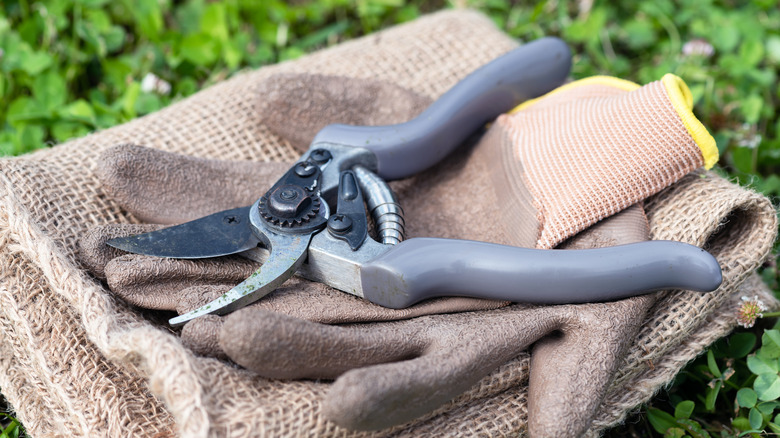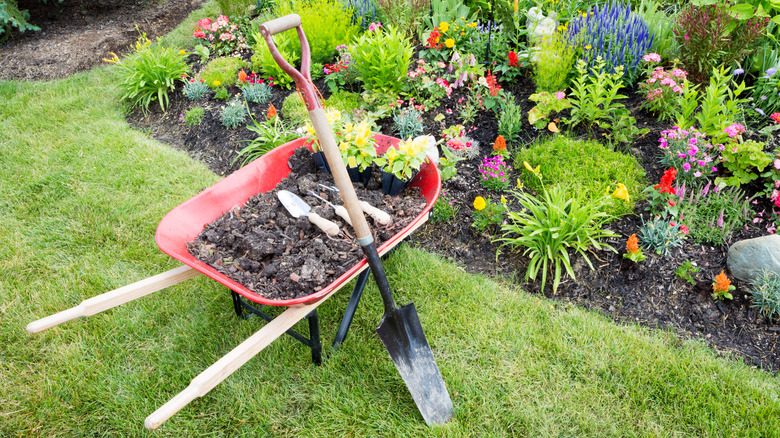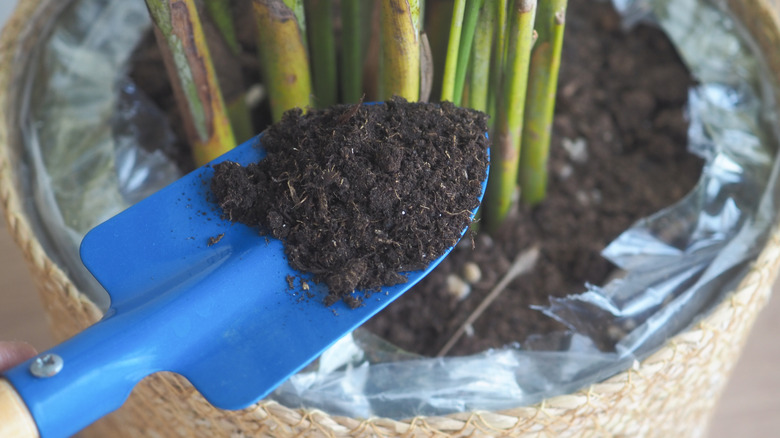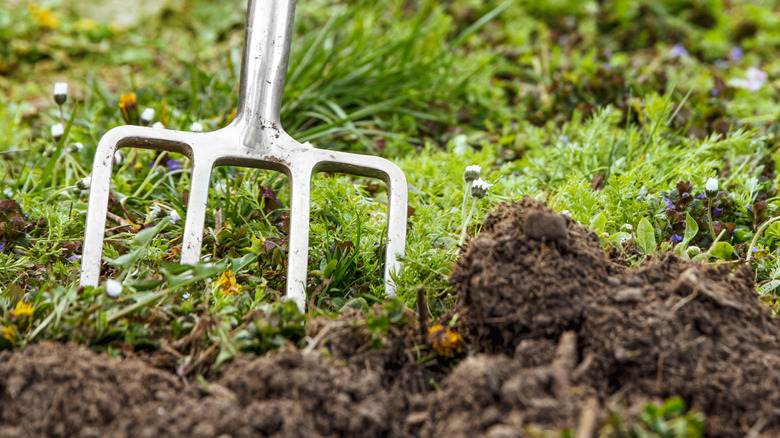9 Tools To Have On Hand When Dividing Plants
Dividing plants is not only a practical way to propagate your favorites, it also helps keep your mature perennials healthy and growing well. Over time, plants can become crowded, producing fewer blooms and competing with themselves for nutrients. Dividing them every few years revitalizes growth, improves flowering, and allows you to expand your garden at no extra cost. There are several things you need to know about dividing perennials, including what tools are the best to have on hand. Having the right tools in your garden shed ensures you can perform this task without damaging delicate roots or crowns, making the process smoother and more successful. A sharp garden knife, a sturdy hand trowel, and a pair of bypass pruners are just a few of the tools needed to divide plants properly and safely. Using the right equipment ensures clean cuts, minimizes root damage, and helps each division recover more quickly once replanted.
Not all plants are candidates for dividing, like these nine perennials you should avoid dividing at all costs, but most can be divided with no problem. Gardeners often underestimate how delicate root systems can be. Struggling with dull or improper tools can easily tear or bruise the roots. Keeping a few dependable tools on hand makes all the difference when tackling this task. Most of the tools needed for dividing plants are part of the most essential gardening tools every gardener needs, so they can be used for a multitude of garden tasks in addition to dividing. These tools will give you greater control during the dividing process, help you work efficiently and enable you to divide your plants with the care needed to keep them healthy and ready to thrive in their new locations.
Garden knife
A garden knife, also called a hori hori, is a great tool for dividing plants and can be used for digging as well as cutting. Most garden knives have a blade that is between 6 to 8 inches long, but there are options that are smaller for more precise, specialized jobs. The handle is usually non-slip and ergonomic for easier and more comfortable gripping so you can perform garden tasks without your hands cramping. Keeping your garden knife in its sheath when not in use will keep the blade in good condition.
Shovel
One of the most common tools in the garden shed is probably the standard round point garden shovel. This tool is used for planting, digging, dividing plants, and many other tasks, making it a pretty important item to have around. Traditional round point shovels can last a long time if they're kept dry between uses and the blade is kept sharp. Look for shovels with sturdy, heavy duty handles and welded scoops. Metal handled shovels generally last longer than those with wooden handles. Shovels can be purchased at any home improvement store.
Hand fork
Hard forks, sometimes referred to as weeding forks, are a good tool to have for digging up weeds, for digging smaller holes for transplanting, or when dividing smaller plants. Their small size enables you to get into tight areas, and they're much lighter to work with than a digging fork. The best material for a hand fork's blades is stainless steel as it's less prone to rusting. Handles are usually covered with a non-slip grip for gardener's comfort and made from wood to prevent the tool from being too heavy for smaller digging jobs.
Garden gloves
No gardener's tool shed would be complete without a pair of good quality garden gloves. Garden gloves shield your hands from thorns and sticks, keep your nails clean, and can protect against bug bites and stings, too. Garden gloves come in a huge variety of materials, from 100% waterproof leather to breathable cloth for lighter jobs where you don't have to worry about punctures from thorns. With the huge variety of styles and colors, you can have some fun choosing a few pairs that express your personality.
Pruning saw
Despite its name, you can use pruning saws for other gardening jobs, too. They are very handy for dividing plants and can cut through tough root balls that you may not be able to separate with your hands. Pruning saws have a variety of blade lengths available. If you're looking for more control and detailed cuts, opt for a blade that is between 6 and 10 inches long. Pruning saws either have a curved blade, good for push and pull type cutting, or a straight blade, ideal for more precise pruning jobs.
Pruning shears
There are several types of pruning shears available that can help with dividing plants and other gardening tasks like pruning and trimming. The two types of pruning shears are anvil and bypass. Out of the two, bypass pruners are more versatile and less likely to cause any damage. Choose pruning shears that are comfortable to hold in your hand as they are available in a variety of sizes, weights, and handle styles that work for different hand sizes and preferences.
Spade
A good quality garden spade is a must-have for any gardener's tool shed. It is an excellent digging tool to have on hand and features a longer handle and a straight, sharp blade with a low angle that makes it easy to dig into the soil using your legs and body weight rather than your arms and shoulders. Common uses for the spade include turning the soil, removing sod, and transplanting plants. It is also an excellent tool for dividing plants in half or quarters if the root ball is large enough.
Trowel
Another must-have tool for your garden shed is the trowel. This hand tool is used for a large variety of tasks including dividing plants, digging holes, transplanting flowers, and adding soil or mulch around your flowers. Trowels made of stainless steel are a good choice due to their sturdiness and resistance to breaking even when digging in tough dirt. Trowels come in a variety of sizes, handle styles, and even scoop styles, so find one that fits in your hand comfortably and that has a good weight to it.
Garden fork
Garden forks are another very useful tool to have on hand for dividing plants and doing a variety of digging and soil loosening tasks. Many gardeners use two garden forks to pry apart root balls that are too tough to be separated by hand. A good quality garden fork is typically made from high carbon steel for maximum strength. The handle should be a comfortable length — long enough to provide the leverage you need for any type of job. Garden forks have a variety of handle styles with ergonomic features and comfort grips to reduce hand fatigue.

